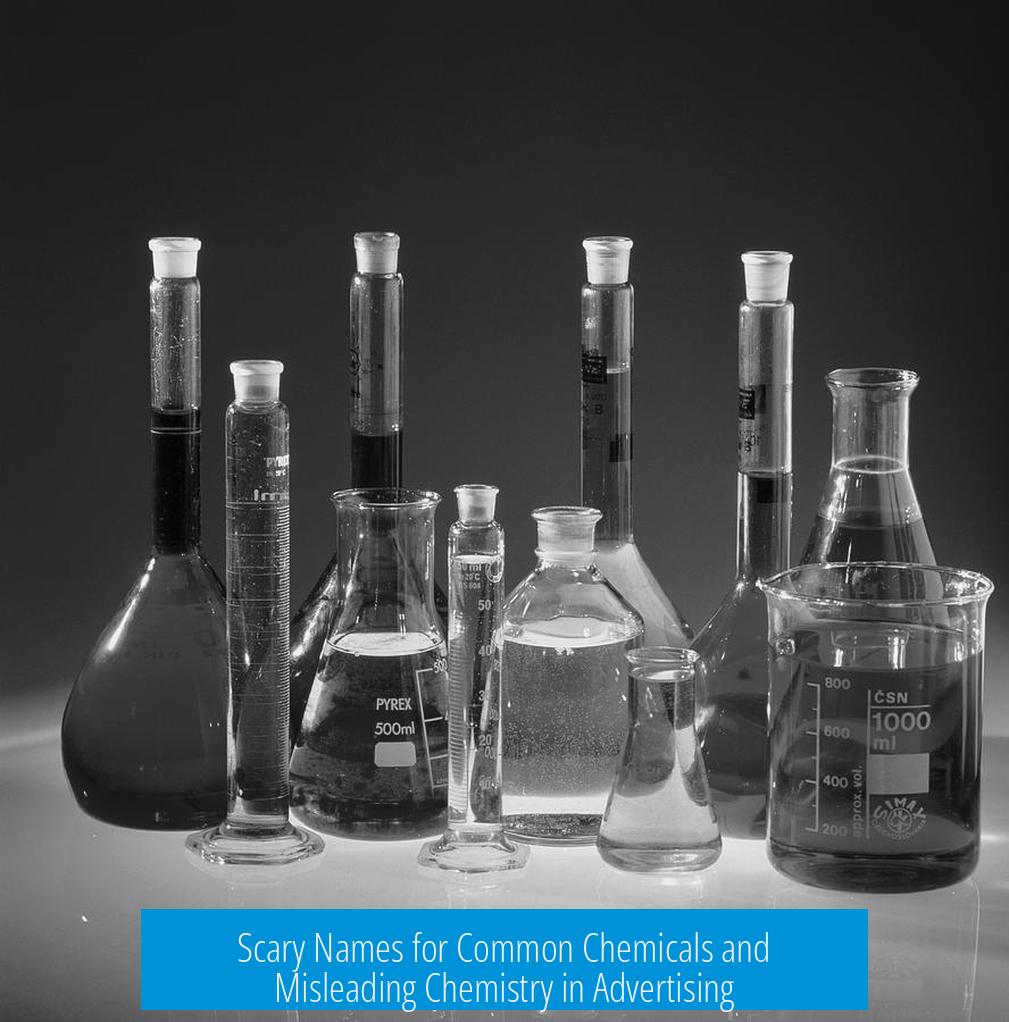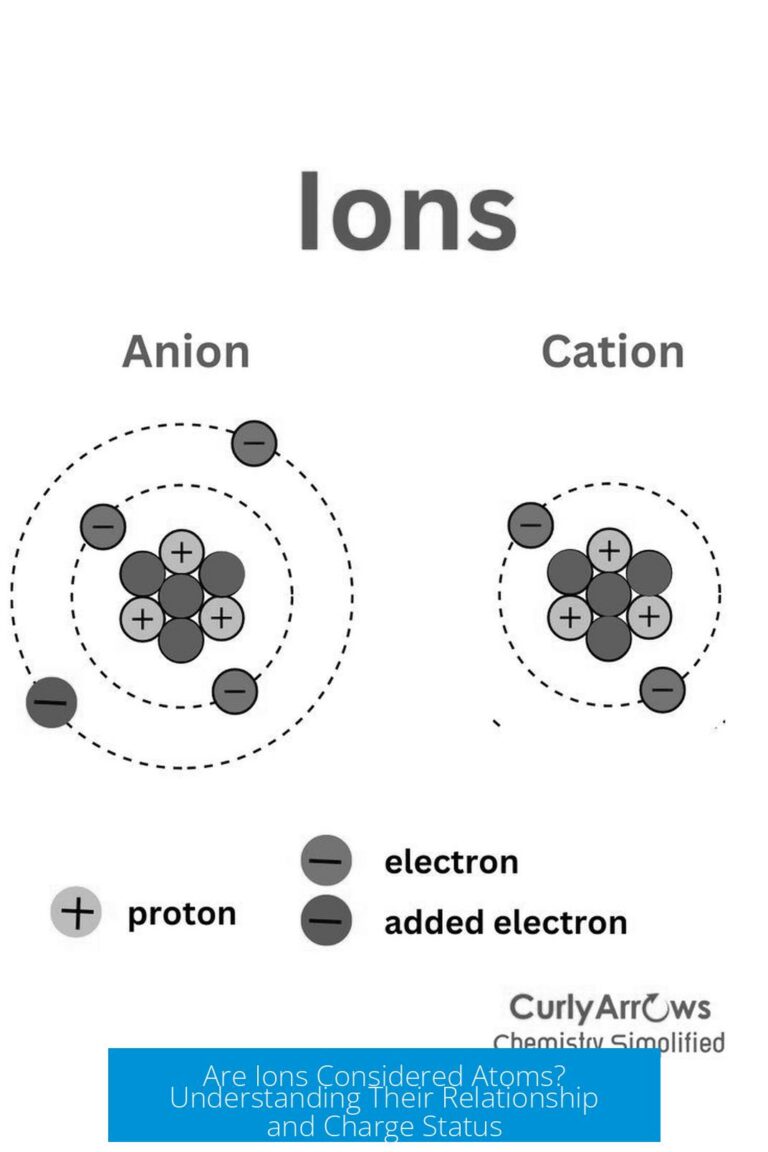“Scary” Names for Common Chemicals and Examples of Bad Chemistry in Advertising
Chemistry often uses systematic names that can sound intimidating, even when referring to everyday, harmless substances. These names sometimes foster unnecessary fear in the public. Advertisers and media occasionally exploit this fear, resulting in misleading or deceptive claims. Exploring these “scary” chemical names and common advertising missteps reveals gaps in public understanding and highlights the importance of chemical literacy.
1. Why Chemical Names Sound “Scary”
Chemical nomenclature follows precise rules to describe molecular structure. The resulting names are scientific, specific, and sometimes complex. This complexity can sound threatening or alien to people without chemical training.
Many chemical names include unfamiliar terms, long strings of prefixes, suffixes, or numbers. The use of words like “acid,” “chloride,” or “cyanide” also carries negative connotations, regardless of the compound’s actual danger at typical exposure levels.
1.1 Examples of Intimidating Systematic Names Serving Familiar Substances
- (2R,3S,4R,5R)-2,3,4,5,6-Pentahydroxyhexanal: The formal IUPAC name for glucose, a fundamental sugar in biology.
- 1,3,7-trimethylxanthine: This is caffeine’s chemical name, widely consumed daily worldwide.
- Acetylsalicylic acid: The chemical name for aspirin, a common pain reliever and anti-inflammatory.
- Dihydrogen monoxide: A scientific name for water, used to demonstrate how a common substance can sound dangerous.
- 6E-N-[((4-hydroxy-3-methoxyphenyl)methyl]-8-methylnon-6-enamide: Known as capsaicin, it causes the spicy heat in chili peppers.
- Polytetrafluoroethylene: The polymer better known as Teflon.
Many of these names are accurate, but they become tools for misunderstanding. They highlight how science language is often perceived as threatening rather than explanatory.
1.2 Misconceptions Around “Acid” in Chemical Names
The word “acid” triggers fear, but not all acids are corrosive or dangerous at household concentrations. For example:
- Acetic acid is vinegar’s main component, used safely in kitchens worldwide.
- Citric acid, involved in food flavor and metabolism.
- Salicylic acid, an ingredient in acne creams.
- Phosphoric acid, found in soft drinks.
Despite their “acid” label, these substances have safe uses. The fear associated with “acid” often ignores dose and context, which are crucial in toxicology.
1.3 Water Under Different Names: A Classic Example
Dihydrogen monoxide and oxidane are less commonly known names for water. A well-known hoax uses these names to frighten people into buying unnecessary filters or products.
“Literally 100% of people exposed to dihydrogen monoxide have died. It is present in all fatal overdoses…”
This demonstrates how unfamiliarity with scientific names can enable fearmongering. It also shows the importance of chemical literacy to recognize such tactics.
2. Examples of Bad Chemistry in Advertising
2.1 The Dihydrogen Monoxide Hoax
This hoax exaggerates minor hazards of water using its scientific name. Advertisers use pseudo-scientific language to create irrational fears:
- Claiming DHMO causes death without context.
- Promoting “DHMO removal” devices that serve no real purpose.
- Using fear language to sell Himalayan salt blocks or filters.
This highlights how scientific-sounding terms can mislead consumers for profit, often without factual basis.
2.2 Fearmongering in Vaccines and Detergents
Advertising sometimes demonizes “synthetic detergents” or vaccines by listing every chemical ingredient without context. This tactic exploits people’s lack of chemical knowledge to create distrust.
For example, entire ingredient lists of natural foods have been paralleled to vaccine components to exaggerate fears of vaccine safety.
2.3 Misleading Advertising Claims
One notable case showed sugar advertised as “High in energy/Low in calories,” which contradicts basic nutritional science. This misleads consumers on health impacts.
Advertisements often misuse chemical terminology to seem scientific while providing inaccurate or deceptive product claims.
2.4 Public Phobia of Food Additives and E-Numbers
In Europe, food additives approved by regulatory bodies have codes such as E307 (alpha-tocopherol) that sound intimidating. Consumers often view these codes with suspicion, associating them with “unnatural” or “unnamed” chemicals.
Many of these additives are natural compounds or safe preservatives. Such distrust stems from lack of understanding rather than actual risk.
2.5 MSG and Scary Name Advertising
Monosodium glutamate (MSG) is an example where its scientific name contributed to negative perception. Advertising campaigns have played on this fear, sometimes with racist undertones targeting certain ethnic cuisines.
Extensive scientific research shows MSG is safe for most people at typical dietary doses, but public perception remains influenced by “scary” names and bad advertising.
3. Cultural and Educational Perspectives on Chemical Fear
Fear of chemical names varies by culture and education. European education systems often emphasize hands-on chemistry experiments and practical applications early in schooling. This tends to demystify chemical names and reduce fear.
In contrast, some regions in the U.S. show greater public anxiety about chemicals, possibly because chemistry is taught more abstractly. The lack of direct experience with chemical reactions leads to unfamiliarity with chemical terms that sound intimidating.
3.1 Teaching Chemistry as a Language of Atoms
Understanding chemical nomenclature as a language describing atoms and molecules helps students see that names, no matter how complex, refer to understandable substances. For example, mixing baking soda and aluminum to observe reactions creates real experiences rather than fear.
Such approaches reduce the tendency to perceive chemicals as inherently “poisonous” and foster scientific literacy.
4. Additional Noteworthy Chemical Names and Considerations
| Chemical Name | Common Name or Use | Notes |
|---|---|---|
| Polymethyl methacrylate | Plexiglas/Acrylic | Polymer with a complex-sounding name, but commonly used |
| Monosodium bicarbonate | Baking soda | Simple household compound but sounds complicated |
| Titanium dioxide | Food color, sunscreen ingredient | Misunderstood due to similarity to dioxins and toxicity fears |
| Cyanide | Poisonous compound | Toxicity depends on dose; found harmlessly in trace amounts in apple seeds |
This list illustrates how names alone don’t imply hazard; context and understanding are critical. Moreover, many essential compounds have complex names but low risks.
Key Takeaways
- Chemical names can sound “scary” due to complexity and unfamiliarity, not inherent danger.
- Names including “acid,” “cyanide,” or large systematic descriptors often trigger irrational fear.
- Water’s systematic name dihydrogen monoxide effectively demonstrates fear manipulation.
- Advertising sometimes exploits chemical jargon to frighten consumers and boost sales falsely.
- Public phobia about food additives and synthetic chemicals often stems from misunderstanding.
- Education that demystifies chemical names and emphasizes practical experiences reduces fear.
- Understanding dose and context is crucial to evaluating chemical safety properly.
Q1: Why do common chemicals like aspirin or caffeine have “scary” names?
Many common chemicals have systematic or IUPAC names that sound complex and intimidating. For example, acetylsalicylic acid is just aspirin, and 1,3,7-trimethylxanthine is caffeine. The long names often confuse people.
Q2: How does the name “dihydrogen monoxide” cause fear despite being water?
“Dihydrogen monoxide” is the scientific name for water. Ads using this name exploit unfamiliarity to create false danger, promoting products to remove or filter it. This is a classic fearmongering tactic in advertising.
Q3: Can “acid” in chemical names cause misunderstandings about safety?
Yes, many harmless substances contain “acid” in their names, like acetic acid (vinegar) or citric acid (in fruits). People often assume any chemical with “acid” is dangerous when many acids are safe and essential.
Q4: What are examples of bad chemistry in advertising beyond fearmongering with names?
Ads sometimes exaggerate risks of synthetic detergents or vaccines by listing chemical names to scare people. Another case is misleading food ads claiming ‘high energy/low calories,’ which confuse consumers about actual nutrition.
Q5: Why do food additives with E-numbers cause public fear?
E-numbers label approved food additives like E307 (alpha-tocopherol). Despite being safe, their coded names sound mysterious and can trigger unfounded fears among consumers, leading to bad perceptions of these chemicals.





Leave a Comment